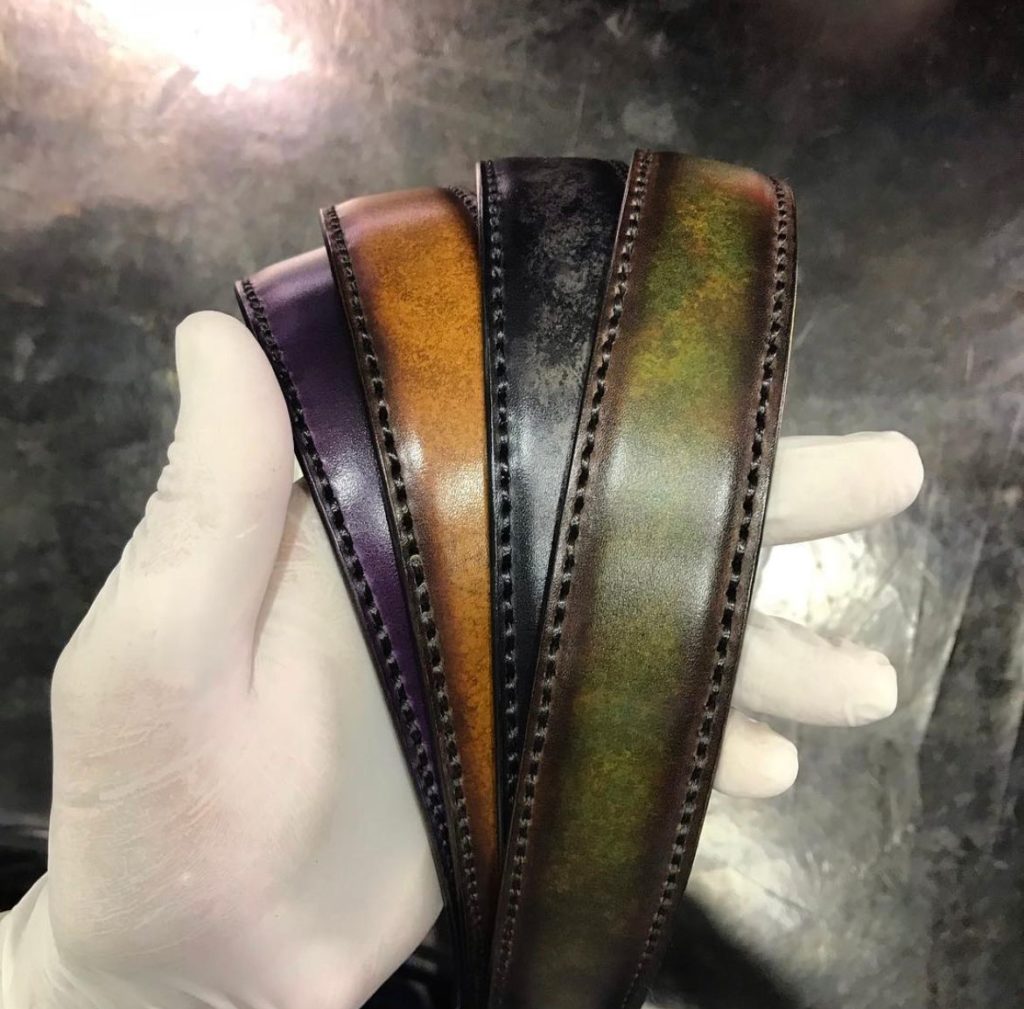The Ultimate Men’s Belt Guide


Belts, simply put, are a necessity. They’re a part of almost every professional outfit, and most casual ones too. That being said, belts shouldn’t only be regarded as a functional pieces. In addition to, you know, holding up your pants, belts also serve the potential to be a great statement or finishing piece to any look. When you need to add a splash of color or distinguish a break from your midsection to your lower body, there’s nothing more important–and easy–than a belt. Let’s take you to step by step to picking out the belt that you need.
What to Avoid
This seems like the logical place to start. There are tons of belts out there, and many of them are downright awful. Cheap materials like synthetic leather will look obvious on a belt and should be avoided. It’s worth it to shell out a little extra cash to invest in a belt that will last you for years.
Length
The first thing to do before you pick out a belt is to understand what length you need. Belts are usually measured in inches or centimeters. You’ll know if a belt is a right size when you put it on. Unless you’re buying a belt online, never purchase a belt without making sure it fits first. If a belt is marked with waist numbers (30, 32, 34, etc.) the general advice is to buy a belt that is two sizes larger than your pant size. This’ll allow for better adjustment so you won’t end up using the last hole on your belt and having too much extra belt sticking out.
Material
Leather belts are classic and irreplaceable. A leather belt is something every man should own and is the hallmark of formal wear. That being said, belts have made the transition into more casual materials. Cotton and polyester belts are great and perhaps even preferred equivalents to leather belts when it comes to casual looks. They come in a lot of different colors and can stand out against a monochromatic outfit. If you still want to keep it somewhat formal, distressed leather is another good option that’s more on the casual side. Distressed leather adds some style and personality to an otherwise classic office belt.
Buckles
Every belt technically has a buckle. It’s often the flashy buckles that are labeled as “belt buckles,” though. Flashy belt buckles are something that is often debated on. In our humble opinion, avoid them. Some belt buckles can work and add a focal point for an outfit. However, most of the time, they look excessive, especially for the price. The showy and blinged-out look comes off as too intense, and great style should always appear effortless. However, to each their own, so check them out and decide for yourself.
Types of Belts
There are several different types of belts and they all serve different purposes. For the most part, you should own one of each.
Formal Belts
This is the belt you’ve probably always had at least one of. It is the belt you pair with your suits or any other formal wear. They are almost always black, brown, or tan, and made with leather or suede. The pattern on these belts, if any, should be subtle. These do not statement pieces, but rather, finishing touches that bring your whole outfit together. As a style tip, consider matching the metal on your buckle with the metal in your watch or other accessories.
Casual Belts
Whereas formal belts are meant to be functional, casual belts are all about adding style. Experiment with colors and materials. Many casual belts are made out of leather or woven fabric, lending themselves to a myriad of opportunities when it comes to color and design. These belts are not necessarily meant to be matched with anything else in your look, so feel free to mix things up and incorporate one with pretty much any ensemble, except, of course, your formal business attire.
The Belts Checklist
If you’re looking to build a versatile belt collection, you’ll probably want to start small. Every man should start with at least 3 essentials: a black or brown formal belt, a tan or light brown leather belt, and a casual fabric belt.
Black Belt
The versatility of the classic black belt is almost limitless. The common rule is that these belts need to match the color of your shoes, or at least be close. You can always experiment with breaking conventional fashion rules and wearing contrasting belt/shoe colors, but matching will usually stand as a rule of thumb. Black belts typically go with black shoes or darker colors like blue. With these belts, there’s really no other option than getting a good-quality leather belt. The obvious pairings for black belts are black and navy suits, but they work well with pretty much any outfit or color because of their neutral look. A black belt is truly the epitome of formal belt styling.
Tan Belt
Like black, tan, and brown belts are typically paired with shoes of the same color, or lighter. These are also a staple of formal wear. Brown and tan belts are perfect for outfits featuring lighter colors and match up well with bright blue and olive suits
